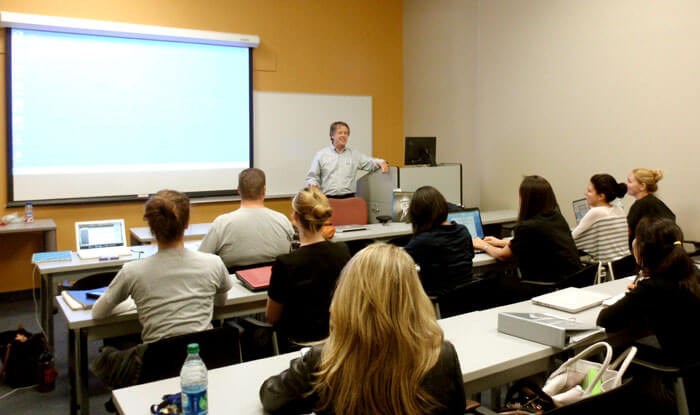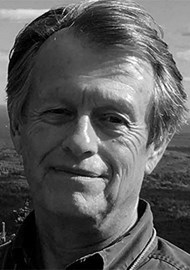Part 1 of this topic is available here.
Professor Hall reviews current requirements for practising audiology in the USA; audiologists must have a Doctor of Audiology degree from an accredited university programme and a licence in the state where they provide clinical services.
Doctor of Audiology Education There are currently more than 70 Doctor of Audiology programmes in public and private universities in the USA. Readers are referred to the Student Academy of Audiology (SAA) pages of the website for the American Academy of Audiology (audiology.org) for links to all current Doctor of Audiology programmes. It is generally agreed that there are too many programmes, and too few students enrolled in many of them.
Admittedly, some are little changed from the days when they offered a Master’s degree in audiology with limited instructional and clinical resources. In contrast, highly regarded Doctor of Audiology programmes are invariably located on a university campus along with other health professions and/or in medical centre environments with large and varied patient populations. Such programmes include faculty with expertise in all clinical specialty areas, including paediatrics, vestibular disorders, and cochlear implants.
Across the USA, class size remains modest, on average between 10 and 15 students. A typical four-year Doctor of Audiology programme has about 40 to 60 students either on campus or completing their externship experience each year, but there are exceptions. One programme (Salus University) enrolls more than 30 students each year. There is serious concern about the rather small number of students in Doctor of Audiology programmes in comparison to, for example, medicine, dentistry, and optometry.
“The number of newly minted audiologists is not adequate to offset attrition in the profession”
The number of newly minted audiologists is not adequate to offset attrition in the profession due to retirements, deaths, and persons who, for a variety of reasons, are not employed full time [1]. The traditional Doctor of Audiology programme requires three years of classroom and clinical coursework plus a one-year ‘externship’ experience that may be completed on campus or at another approved clinical site somewhere in the country or even internationally. However, a handful of programmes, including recently-developed ones, have innovative and intensive three-year curricula for classroom and clinical education leading to the Doctor of Audiology degree. Among them are Pacific University near Portland, Oregon, the University of the Pacific in the San Francisco Bay area of California, and Northwestern University where formal education of audiologists began over 70 years ago.

Figure 1. Second year Doctor of Audiology students in an auditory electrophysiology
class at Nova Southeastern University in Ft Lauderdale, Florida, USA.
Doctor of Audiology programmes must be accredited by a national accreditation body. There are two such bodies. The Accreditation Commission for Audiology Education or ACAE (www.acaeaccred.org) is the only body “of, for, and by audiology” with rigorous standards to assure that “recipients of the degree in Audiology (AuD) [...] have sound knowledge, diagnostic, treatment, communication and professional skills, including management and business acumen in order to function as autonomous direct care providers”. Another body, the Council on Academic Accreditation or CAA, accredits Master’s level graduate education for speech pathology as well as doctoral level education for audiology.

Figure 2. Steps required to become a practising audiologist in the USA.
The educational and licensure process is described in the text.
NOTE: CSD = Communication Sciences and Disorders.
Figure 2 illustrates the major steps required to become a practising audiologist in the USA. The first requirement is an undergraduate degree from a regionally accredited university. Many students who pursue a career in audiology begin with an undergraduate focus in communication sciences and disorders (CSD), and then they decide that speech pathology is not their cup of tea. Other undergraduate students, including some with strong academic credentials in basic sciences (e.g. biology, physics, engineering) or another field like psychology, decide on audiology as a career goal rather late in their bachelor’s degree programme. Many of us were entirely unaware of the profession until we took an introduction to audiology course, often by chance.
Two or three prerequisite courses in audiology and related topics are typically required for acceptance into Doctor of Audiology programmes. Access to prerequisite courses is mandatory for CSD majors and always available for non-CSD undergraduates at universities that have on-campus programmes in speech pathology and/or audiology. However, online options for completing prerequisite audiology courses are also available to any student anywhere in the world. For example, the author teaches such courses in the Prerequisite Certification Programme for audiology and speech pathology at the University of Hawaii (http://csd.jabsom.hawaii.edu/pcp/).
The final requirement for practising audiology, after earning a Doctor of Audiology degree, is licensure in one or more of the 50 states in the USA. Aside from the consistent requirement of a Doctor of Audiology degree from an accredited programme, the specific criteria for licensure in audiology vary somewhat from state to state. In the past, state licensure boards demanded evidence that applicants had passed a national examination and met criteria for certification by an appropriate body.
Now, however, many states simply require a transcript documenting graduation from a Doctor of Audiology programme. Once an audiologist has obtained a licence in one state, it’s often not difficult to acquire a licence also in additional states. Licensure in more than one state is necessary for audiologists who provide patient services in multiple clinical facilities in adjoining states. Proof of ongoing continuing education, usually 30 hours every two years, is necessary to maintain a state licence in audiology.
Closing Comments
Models and pathways for the education of audiologists in the USA continue to evolve. New Doctor of Audiology programmes are now emerging on the west coast, a region of the country with a large population yet few audiology educational opportunities. Some of the newest programmes require three intensive years of post-bachelor degree didactic and clinical courses, rather than the traditional four-year requirement.
There is increasing appreciation among academic audiologists, and within one of the commissions responsible for accreditation of Doctor of Audiology programmes, of the need to assure that graduates have the knowledge and skills required for practice of evidence-based clinical services [2, 3]. An evidence-based approach to the diagnosis and management of hearing loss and related disorders is a necessary component of best practices in audiology.
“Many of us were entirely unaware of the profession until we took an introduction to audiology course, often by chance”
Three universities in the USA have recently developed, or continue to offer, Doctor of Audiology education for international students, specifically Nova Southeastern University, AT Still University, and Salus University. For example, in addition to operating the largest on-campus Doctor of Audiology programme in the USA, Salus University offers a hybrid educational model leading to the AuD degree. The International AuD Bridge Programme consists of online and regional face-to-face teaching [4].
Any audiologist in the world, including the USA, who holds a Master’s degree in audiology and three years of clinical experience can apply for the International AuD Bridge programme. Salus University also now offers a hybrid (online and regional face-to-face teaching) Master of Science in Clinical Audiology degree programme for international (non-USA) practising audiologists holding a bachelor’s degree in audiology [5].
References:
1. Windmill IM, Freeman FA. Demand for audiology services: 30-year projections and impact on academic programs. Journal of the American Academy of Audiology 2013;24(5):407-16.
2. Hall JW III. What is evidence-based audiology? Audiology Today 2018;30(1):74-5.
3. Hall JW III. Educating AuD students for practice of evidence-based audiology. Audiology Today 2018;30(2):85-7.
4. Salus University. Doctor of Audiology Online Bridge Program.
www.salus.edu/colleges/
audiology/doctor-of-audiology
-online-bridge-program.aspx
Last accessed May 2019.
5. Salus University. Master of Science in Clinical Audiology.
www.salus.edu/Colleges/
Audiology/Master-of-Science
-in-Clinical-Audiology.aspx
Last accessed May 2019.
Declaration of Competing Interests: The author is a part-time permanent Professor in the Osborne College of Audiology at Salus University.






